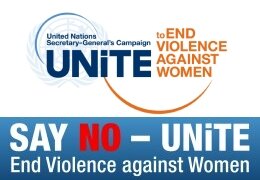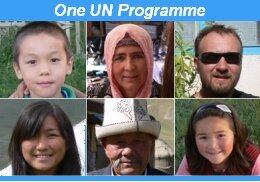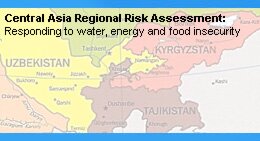| Kyrgyzstan: Inter-Agency Health and Nutrition Initial Rapid Assessment, Southern Kyrgyzstan - Jalal Abad and Osh Oblasts, June 29 - July 3, 2010 |
|
|
| Hits (5296) |
| Category: (Publications) |
| Wednesday, 21 July 2010 |
| Type of document | report |
|
Executive summary i. Kyrgyzstan has experienced escalating violence since the previous government was overthrown on April 7 and an interim government took power. Subsequently, violent clashes took place in Osh and Jalal-Abad Oblasts (province) throughout April and May and fighting reached its highest intensity from June 10-14 during which shooting, killing, looting, and property destruction were widespread in cities as well as in rural areas leading to mass population displacements. After four days, a state of emergency was declared and an uncertain peace prevailed until the June 27 referendum. ii. On June 24th, in Osh oblast, UNHCR registered a total of 25 settlements / centres that received IDPs from different rayons (districts). One assessment team met with one displaced Uzbek community in Mady village (Kara Suu rayon) that was not registered by UNHCR. The exact figures on IDPs (how many and where they were/are) and on settlements are not available. iii. As of July 5th, the Ministry of Health in Bishkek reported the following data for both Jalal-Abad and Osh Oblasts: 2,319 persons were provided with medical care, including 1,075 hospitalised patients and 1,243 patients treated in outpatient departments. Currently 141 patients are still hospitalised. Disaggregated data are not available for the moment. The total number of reported deaths is 309 persons, including 249 registered by the Office of Forensic Expertise. Ninety-two percent (229/249) were men. The official figures provided at central level may not correspond with the figures reported at Oblast level. iv. Overall, the crisis has not had a significant impact on the health of the population in the affected areas in the short term. Health providers have been able to cope with the flow of patients during the conflict. However, the crisis has clearly showed weaknesses and limitations in the health system highlighting old infrastructure and unavailability of appropriate equipment and supplies. This raises the need to focus on health system strengthening, to provide better care to populations in the area and to avoid a health crisis if another emergency occurs in the future. v. Medical supplies: according to the health authorities and health professionals, with a few exceptions, secondary health care facilities were oversupplied with essential drugs and medical supplies through the humanitarian aid, while PHC facilities were undersupplied. As hospitals are officially not required to supply PHC facilities, medical supplies were not distributed to PHC facilities and health points. Meanwhile, health workers from PHC facilities didn't approach relevant authorities to request their needed supplies. The drug supply for chronic patients was interrupted during the crisis and remain a challenge. In Osh, only the central pharmacy is open for the time being, while the other pharmacies are either closed, or have no drug supplies. Usually drugs for 6 chronic diseases are provided by the State, which covers up to 70% of the cost, while patients pay the remaining 30%. vi. Access to health care: it was reported that many patients in need of health care did not seek medical assistance at the health facilities due to insecurity, road blocks, and lack of public transport. In addition, Uzbek patients, feared going to the hospital where medical services are provided mostly by Kyrgyz staff. At the same time, Kyrgyz medical staff were afraid/reluctant to serve Uzbek communities. Most Uzbek medical staff didn't report to work during the crisis: some stayed either at IDP points or with host families. Consequently, certain areas were underserved or not sufficiently covered. According to local authorities, however, many of the staff who didn't work during the crisis have since resumed working. vii. Health care delivery: - A few health facilities were slightly damaged and a total of 5 ambulances were destroyed, 2 in Jalal-Abad and 3 Osh but overall, health facilities are functioning. - The number of home deliveries have increased during the crisis as most women, particularly Uzbek women, didn't go to maternity houses at primary health care level because of lack of security. According to the director, there was a significant decrease in the number of births in the Osh Oblast Maternity Hospital. Usually the average number of births per 24 hours in the maternity hospital is about 12-14, however during the conflict the number went down to 4. The number is now recovering and is reaching 8-9 deliveries a day. The number of home deliveries has also significantly increased. While in 2009 the total number of home deliveries was 36, there were 73 home deliveries in four days of the conflict only. Access to maternity hospital was substantially reduced due to insecurity as well as the outflow of women to neighbouring districts and Uzbekistan. Many women have also requested to be discharged immediately or on the next day after birth. Pregnancy related conditions such as eclampsia and haemorrhage were reported as increasing. There were also many spontaneous abortions occurring, however the exact number is not available. - Ambulances play critical role in timely provision of services. The number of home deliveries increased during the conflict. Timely transportation to maternity houses, referral in timely manner as well as health providers' capability to ensure safe delivery if it happens at home is critical for the health of mothers and newborns. Some villages are up to 600 and 700 kilometers away from the closest maternity house. The tertiary level Maternity Department of Osh Oblast Hospital, has requested a new ambulance to serve 9 maternities. - The number of reported cases of sexual violence is relatively low when compared to the many reported gender-based violence cases, where survivors were severely beaten. A total of 18 cases of sexual violence were registered by the Oblast joint hospital, 17 of them were killed. The healthcare facilities often did not have PEP nor were emergency contraceptives administered in a timely fashion. Staff are not trained on WHO methodology for clinical management of rape in a crisis situation. Immediate referral systems are not in place between crisis centres and healthcare providers and needs to be addressed. It is critical that referral mechanisms be available between health, psychosocial and legal assistance for victims of GBV (Gender Base Violence). - The provision of immunization services stopped during the conflict and gradually resumed. In addition, IDPs didn't have their immunisation cards with them. Vaccinations have not yet been provided to remaining IDP points in Osh because they are not registered with the Family Group Practitioners Centres of the neighbourhood. - The TB centre (a 240 bed hospital), was partially damaged by the conflict. The laundry facility of the Osh Oblast TB Centre was burned. However the facility was easily accessible during the conflict and services were provided free of charge for TB patients. 25 out of 50 Multiple Drug Resistant TB patients were displaced and had no access to their drugs. |
|
| Download | Download (Size: 387 Kb | Hits: 339) |
|
|
Food Security |





















